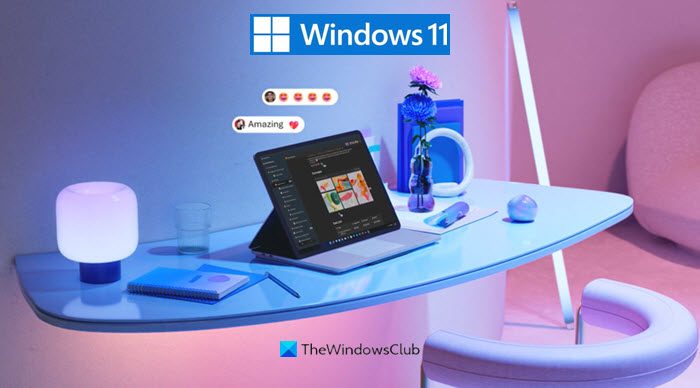We all use one or more antivirus software, Internet Security Suite, or Firewall software on our Windows computer. We keep them updated, go for zero-day patches, and keep hunting for a better combination of anti-malware for better protections. But what most anti-malware do is that they provide us with application-level security. This is because the anti-virus is itself loaded as an application. With such a system, our computers are still at danger during boot and also while invoking any other program. What we need to tackle such threats is an operating system that works like an anti-malware.

Windows Anti Malware Operating System
Windows 11/10/8.1 has some good security features to counter malware. We’ll look at the feature while talking about possible vulnerabilities on any computer.
Trusted Boot
Any computer is most vulnerable just when you press the Power button. When it is booting, there is a time gap between loading critical OS components and then the anti-malware. This gap is used by many malware to manipulate the boot process and thereby compromise the computer or network.
Most advanced operating systems now apply different techniques to prevent boot-hijacking. One of the most accepted methods is Trusted Booting. In this method, the operating system first loads a component that verifies if the other components being loaded are indeed operating system files or files needed to run a particular application. If it finds any anomalies, the boot process is terminated.
Likewise, for “secure applications”, that are considered part of the operating system and which are required by the OS to work properly, the app signature is determined by the Trusted Start process. If it appears hazy, it won’t load and you may or may not receive an error message based upon the nature of the application.
Windows boot-time anti-malware protection
Windows supports four protection features to help prevent malware from loading during the boot process:
- Secure Boot. PCs with UEFI firmware and a Trusted Platform Module (TPM) can be configured to load only trusted operating system boot loaders. This is Secure Boot.
- Trusted Boot. Windows checks the integrity of every component of the startup process before loading it.
- Early Launch Anti-Malware. ELAM protection technology tests all drivers before they load and prevents unapproved drivers from loading.
- Measured Boot. The PC’s firmware logs the boot process, and Windows can send it to a trusted server that can objectively assess the PC’s health.
Coming to different applications we use on a different operating system, we tend to rely on third-party anti-malware which keeps analyzing the different processes on a real-time basis and alerts you when anything suspicious is found.
Robust Windows Firewall
Though the Firewall was bought in early with Windows XP, it was weak. With subsequent versions of Windows, the OS bundled firewall became only better. It keeps a real-time check on both incoming and outgoing packets and blocks any connection that acts suspiciously. The only downside is (if you think it is) lack of alerts so people don’t know whether the firewall is indeed working. But you can always check the Firewall log from the Control Panel – Windows Firewall to see how the traffic/packets were handled. Today the Windows firewall is truly a robust one!
RAM compartmentalization
Along with the hack attempts bypassing firewalls, another problem with traditional operating systems is that they tend to mix up electronic memory (the RAM bytes) with one or more programs. For example, if you are running programs A, B, and C at the same time, and if there is a need for some data to be stored for program B, the operating system will simply put the data into the next available empty cells. These data cells are not isolated, so the other programs may snoop out or even write on them to infect the computer.
The operating system provides a RAM compartment for each program and its data. That is a kind of sandboxed RAM. If program A is running in compartment 2, program B cannot store its code or data into the empty RAM cells allotted to program A. If there is a need for more storage, it falls back to the paging file on Hard Disk.
In short, the operating system now takes care that each program runs in its own shell (designated area) and other programs cannot manipulate its data, thereby reducing the chance of malware attack and malware replication.
I do not know about Mac and Linux, as I did not study them in-depth. I know the previous versions of Windows were vulnerable. However, with Windows 8.1 and later, a trend appears to have been set where you get an “anti-malware operating system” that reduces vulnerabilities to least.
If you have doubts about Measured Boot, Secure Boot, or Trusted boot in Windows, or anything to add, please leave a comment below.
I love this! Take that haters!
INTERESSANTE ED UTILE.GRAZIE ARUNKUMAR. CIAO. DR.ADAMOADAMAS KADMON
While install latest graphic driver or intel product show this “The system does not meet the minimum requirements” how to solve the prb sir
Did you copy-paste parts of the article from Technet? http://technet.microsoft.com/en-us/windows/dn168167.aspx That’s called plagiarism.
Honestly since windows 8 preview, I’m a not using an Antivirus and Firewall anymore except the integrated one from Windows and it works like a charm. I never got any problem and I will keep it that way for a long time.
Oh, Microsoft trying to change what they made wrong…
quote:
——–
Though the Firewall was bought in early with Windows XP, it was weak.
———-
EARLY??? Nope, it was really overdue, Linux had a firewall much earlier than Windows. Microsoft only reacted to security concerns in XP after MASSIVE security problems forced them to, before they ignored it and tried to sweep it under the carpet.